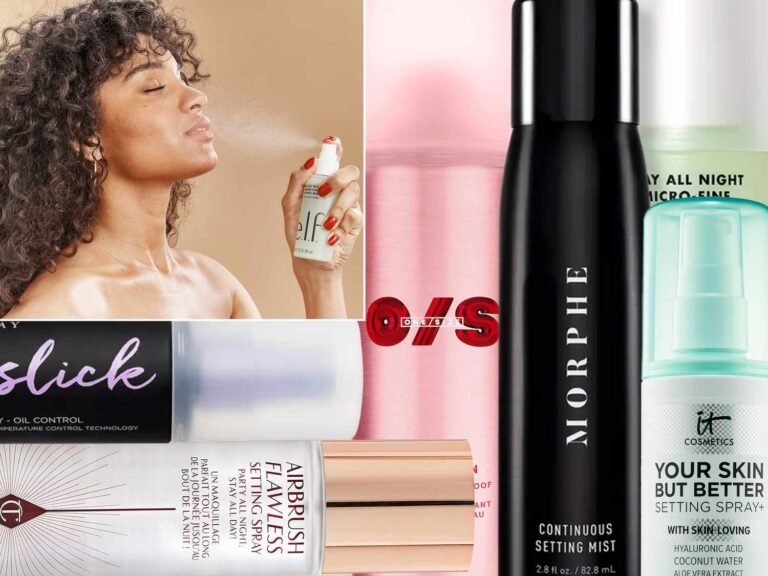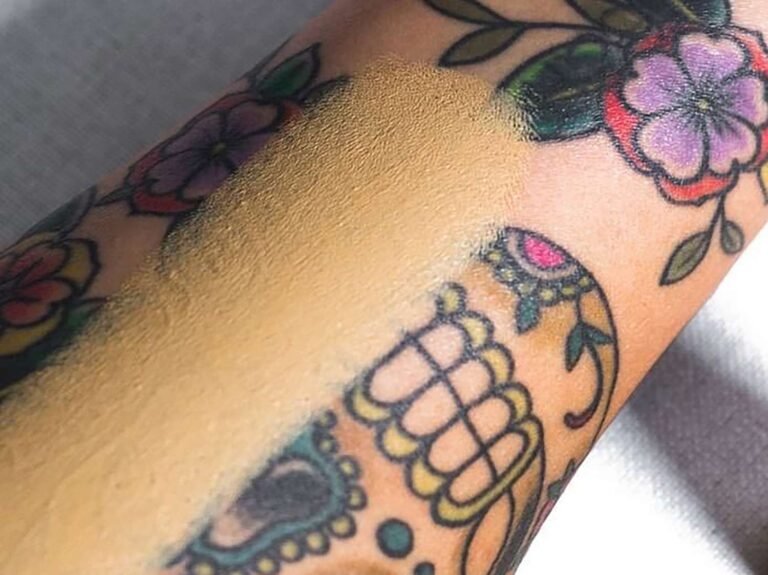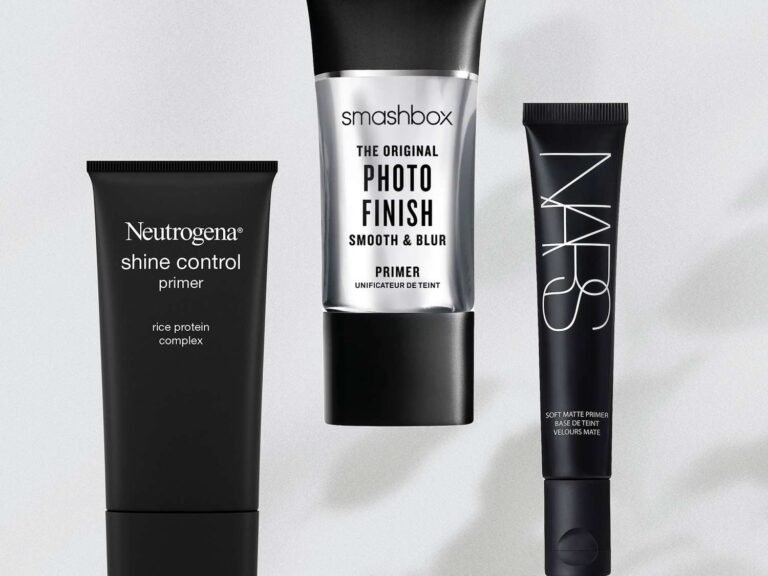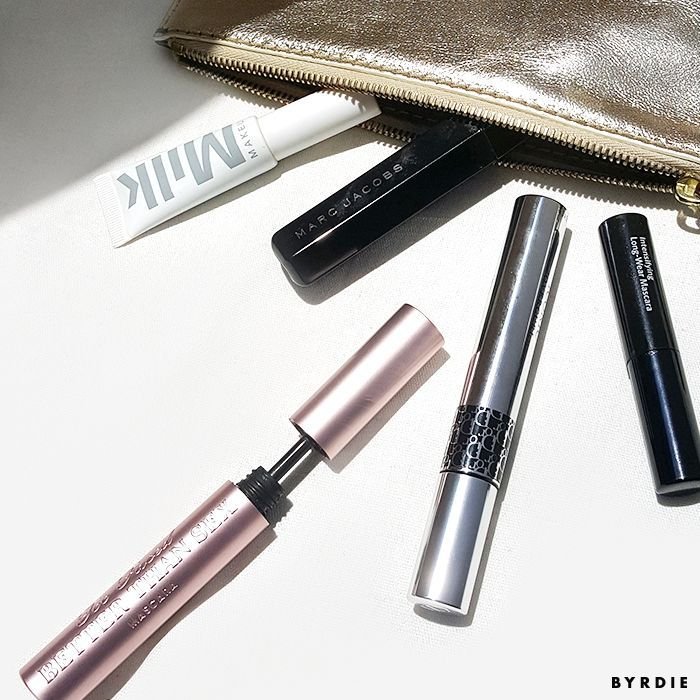How to Sanitize Your Makeup: Ultimate Clean Beauty Guide
To sanitize makeup, regularly disinfect tools and surfaces, and avoid sharing products. Use alcohol-based solutions to cleanse items and replace makeup regularly.
Keeping makeup clean and germ-free is essential for both personal hygiene and skin health. Your cosmetics bag is a potential breeding ground for bacteria that can lead to skin irritation, breakouts, and infections. A well-maintained kit helps prevent the spread of germs and extends the life of your beauty products.
Sanitizing your makeup involves a combination of regular cleansing, using the right disinfectants, and understanding when to dispose of old products. This guide outlines the steps to ensure your makeup is as clean as can be, providing peace of mind and a safer beauty regimen. Let’s explore the best practices for maintaining a pristine makeup collection, ensuring you look your best without compromising your skin’s well-being.
The Basic Principles Of Makeup Hygiene
Embracing makeup hygiene is crucial for healthy skin and long-lasting products. This guide outlines basic steps and best practices to ensure cleanliness and prevent the spread of bacteria in your makeup routine.
H3 heading: Identifying when makeup expiresIdentifying When Makeup Expires
Kiss goodbye to old makeup and hello to safety. Knowing when to toss out beauty products is a staple of makeup hygiene.
Look for the open jar symbol with a number – it’s the Period After Opening (PAO) and shows how many months you can safely use the product.
H3 heading: Understanding cross-contamination risksUnderstanding Cross-contamination Risks
Cross-contamination can jeopardize your health – don’t share your makeup! Microbes and germs spread fast, especially in wet products like mascara.
Implement single-use applicators for testing and keep your tools sanitized to minimize risks.
| Product Type | Shelf Life After Opening |
|---|---|
| Mascara & Liquid Eyeliner | 3-6 months |
| Lipsticks & Lip gloss | 1 year |
| Foundations & Concealers | 6-12 months |
| Powders | 1-2 years |
Preparation Steps Before Sanitization
Keeping your makeup sanitized is crucial for skin health and hygiene. Before diving into the sanitization process, proper preparation is key. Take these initial steps to make sure your makeup and tools get the best clean.
Gathering Necessary Cleaning Supplies
First things first, start by collecting the essential cleaning items:
- Isopropyl alcohol – at least 70% for effective sanitization
- Soap – gentle, unscented variant for brushes and sponges
- Brush cleanser – for deep cleaning makeup brushes
- Disposable wipes or paper towels – to clean surfaces and tools
- Small spray bottle – to apply alcohol on products
- Ziplock bags – for storing clean tools
Organize these supplies within easy reach before you start. This ensures a smooth and efficient cleaning process.
Setting Up A Clean Workspace
A clean area is vital for sanitization to prevent cross-contamination. Follow these steps to set up your workspace:
- Choose a well-lit and spacious area.
- Clear the surface of any clutter.
- Cover the workspace with a clean paper towel or mat.
- Place all your gathered supplies neatly on the covered surface.
Remember to wash your hands before you start cleaning your makeup. This will help to keep germs away from your freshly sanitized items.
Sanitizing Different Types Of Makeup
Ensuring your makeup is sanitized is crucial for clear skin and overall health. Makeup can easily harbor bacteria and even cause infections if not handled properly. Learn to disinfect every type of makeup with this guide.
Subheading for Liquid productsLiquid Products: Sprays And Drops
Liquid foundations, concealers, and primers require special care. A quick way to sanitize is using a makeup sanitizer mist. Simply spray onto the surface and let it dry. Alternatively, a few drops of 70% isopropyl alcohol can also do the trick.
Subheading for Powder-based productsPowder-based Products: Scraping And Spraying
Eyeshadows, blushes, and pressed powders can be sanitized by lightly scraping off the top layer. Follow this by spraying with alcohol-based sanitizer. Allow it to air dry before using it again.
Subheading for Creamy productsCreamy Products: Wiping And Disinfecting
For lipsticks and cream blushes, wipe away the top layer with a clean tissue. Dip or spray the product with a sanitizing solution, then wipe it again before letting it dry.
Subheading for Pencil productsPencil Products: Sharpening And Sanitizing
Eyeliner and lip pencils are sanitized easily by sharpening. After sharpening, dip them in alcohol or a sanitizer for a thorough clean. Let them dry before you put the cap back on.
Deep Cleaning Makeup Brushes And Tools
Keeping your makeup tools clean is crucial for a flawless application and to prevent unwanted breakouts. Deep cleaning your brushes and tools eliminates built-up products, bacteria, and oil. Dive into the best practices to keep your beauty tools in pristine condition.
Daily Cleaning Routines
Clean brushes mean clear skin. It’s essential to incorporate a quick cleaning routine after each use.
- Use a daily brush spray to disinfect bristles without water or soap.
- Wipe off on a clean tissue to remove makeup residue.
- Avoid harsh cleaners that can damage the brushes.
Weekly Deep-cleaning Techniques
A weekly deep-cleaning session ensures your brushes last longer and stay germ-free.
- Rinse bristles under lukewarm water.
- Use a mild shampoo or brush cleanser.
- Gently work into a lather and rinse thoroughly.
- Reshape bristles and lay flat to dry.
Dealing With Makeup Sponges And Applicators
Makeup sponges and applicators touch our skin daily. It’s vital to keep them clean and germ-free. This guide dives into the best ways to sanitize these beauty tools.
Cleaning And Disinfecting Sponges
A clean sponge applies makeup smoothly and keeps skin clear. Follow these steps to ensure your sponges are germ-free:
- Rinse the sponge under warm running water to remove surface makeup.
- Massage a gentle, soap-free cleanser or liquid dish soap into the sponge.
- Press the sponge to work the soap in and squeeze out the makeup residue.
- Rinse the sponge again until the water runs clear.
- For deep cleaning, soak the sponge in a mixture of warm water and soap for a few minutes.
- Use a disinfectant solution, like alcohol or hydrogen peroxide, to kill germs.
- Squeeze out excess moisture with clean paper towels.
Ensuring Sponges Are Completely Dry
A damp sponge is a breeding ground for bacteria. Always dry your sponges thoroughly:
- Press the clean sponge into a clean, dry towel to remove excess water.
- Leave the sponge in a well-ventilated area to air dry.
- Avoid storing the sponge in closed containers until it is completely dry.
- Consider using a sponge drying stand or rest it on the edge of a clean surface for optimal airflow.
Maintaining Lipsticks And Lip Products
Keeping your lipsticks and lip products clean is crucial for your health and a flawless makeup application. Let’s discover how to maintain these personal items for a germ-free beauty routine.
Wiping And Alcohol Treatment
Simple steps can help kill surface bacteria on your lip products.
- Wipe off the top layer of the lipstick or lip balm using a clean tissue.
- Spray a little 70% isopropyl alcohol onto the surface.
- Allow it to sit for a few seconds and then dry.
The Slicing Method For Complete Sanitation
For a thorough clean, the slicing method removes layers where bacteria can hide.
- Use a clean blade to slice off a thin layer from the lipstick tip.
- Dispose of the sliced piece carefully and clean your blade.
- Follow up with alcohol treatment for extra safety.
This complete guide ensures your lip products stay sanitary and safe for use.
Eyeshadow Palettes And Compacts
Keeping your eyeshadow palettes and compacts clean is crucial. These products touch your eyes and face, attracting bacteria. A proper clean can prevent skin irritation or infection. Let’s ensure these beauty tools stay sparkling clean and safe for use!
Surface Scraping And Sanitizing
First, scrape off the top layer of your makeup. Use a clean spatula or a blunt knife for this task. It removes oils and bacteria. Next, clean the surface with a gentle wipe to ensure the product’s integrity while keeping it sanitized.
| Step | Action |
|---|---|
| 1 | Scrape the surface. |
| 2 | Clean with a wipe. |
Alcohol Misting For Bacteria Removal
Apply a quick mist of 70% isopropyl alcohol over your palette or compact. Hold the bottle around six inches away from the surface. Let it air dry. This process kills bacteria without damaging your makeup.
- Gather a 70% isopropyl alcohol spray.
- Mist from six inches away.
- Let it air dry.
Done regularly, these steps can keep your makeup safe and hygienic. Always handle your beauty products with clean hands and tools!
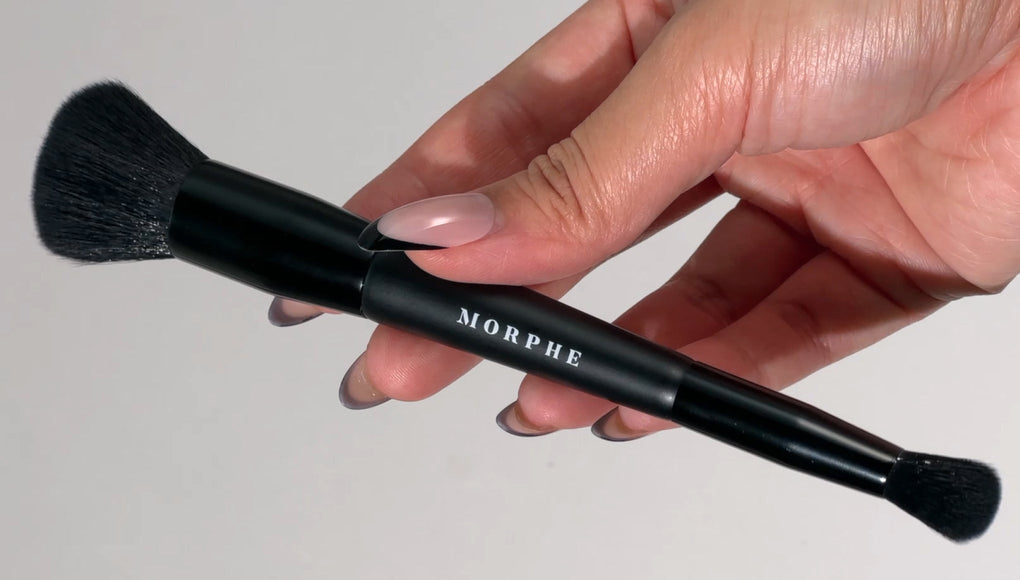
Credit: uk.morphe.com
Sanitation Tips For Professional Makeup Artists
Ensuring the cleanliness of your makeup instruments is vital for any professional makeup artist. Proper sanitation practices prevent the spread of bacteria, ensuring your clients stay safe and satisfied. Adhere to these essential steps to maintain a hygienic makeup kit.
Client Safety ProtocolsClient Safety Protocols
Always prioritize the well-being of your clients with strict safety protocols.
- Use disposables wherever possible, such as mascara wands.
- Never double-dip to prevent cross-contamination.
- Wipe down surfaces and tools with disinfectant before use.
- Ensure your hands are clean or use gloves during application.
- Client pre-screening is crucial. Postpone appointments if illness is suspected.
Sanitizing Makeup Kits After Each Use
Clean kits are a sign of a true professional. Follow these steps after each appointment:
- Remove product leftovers from palettes with a clean spatula.
- Use a sanitizing spray on powders and palettes.
- Sharpen pencils and disinfect with alcohol.
- Clean brushes thoroughly with a suitable brush cleaner.
- Disinfect all cream-based products with a suitable agent.
- Allow all items to air dry completely before repacking.
Keeping a detailed checklist can streamline your sanitation process.
| Item | Action |
|---|---|
| Powders & Palettes | Use sanitizing spray |
| Brushes | Wash with cleaner, rinse, and air dry |
| Creams | Scrape surface layer, disinfect |
| Pencils | Sharpen and disinfect with alcohol |
Organizing And Decluttering Your Makeup Collection
Starting with a clean slate requires organizing and decluttering your makeup collection. This ensures you only sanitize items that are worth keeping. It’s the perfect opportunity to get rid of old or unneeded makeup. This section of our guide will show you how to categorize and eliminate products efficiently.
Categorizing By Product Type For Efficient Cleaning
Categorizing makeup simplifies the cleaning process. Create separate groups for items such as lipsticks, eyeshadows, and foundations. This helps to identify the correct cleaning method for each type.
- Lip Products: Lipsticks, glosses, balms
- Eye Makeup: Mascaras, eyeliners, eyeshadows
- Complexion Products: Foundations, concealers, powders
- Tools: Brushes, sponges, sharpeners
Prepare each category for cleaning by wiping down packaging with a sanitizing wipe.
Disposing Of Expired Or Contaminated Makeup
Makeup expiration dates are critical for skin health. Expired makeup can harbor bacteria, leading to breakouts or infections.
| Product Type | Shelf Life |
|---|---|
| Mascara | 3-6 months |
| Liquid Foundation | 6-12 months |
| Lipstick | 1-2 years |
| Powders | 2 years |
Check the dates. Toss products that are past their prime. Also, discard items that look or smell off, even before their expiration.

Credit: www.morphe.com
Precautions To Avoid Damaging Makeup During Cleaning
Keeping your makeup clean is crucial for skin health and makeup performance. But cleaning products can sometimes harm makeup. This guide will show you how to avoid common pitfalls.
Correct Alcohol Concentration
When sanitizing makeup, the right alcohol concentration makes all the difference. Use a solution that’s 70% isopropyl alcohol. This concentration disinfects effectively while being gentle enough not to ruin your makeup.
- Do not use rubbing alcohol that’s more than 90% concentration.
- It can break down the ingredients in your makeup.
- Applying with a spray bottle helps to evenly distribute alcohol.
- Let the alcohol air dry for full effectiveness.
Avoid Water For Certain Makeup Types
Some makeup should not come into contact with water. This includes powder-based products like eyeshadows and blushes.
| Makeup Type | Do Use Water? | Cleaning Method |
|---|---|---|
| Powders | No | 70% Isopropyl Alcohol Spray |
| Creams | Depends | Wipe Surface, Then Disinfect |
| Liquids | Depends | Sanitize Packaging Exterior |
Water can cause bacteria growth and change the texture of powder makeup. Instead:
- Gently scrape off the top layer.
- Spritz with alcohol.
- Leave it to air dry.
Sanitary Practices Post-covid For Makeup Enthusiasts
With the world regaining its pace post-COVID, makeup enthusiasts must adopt new sanitary practices. Keeping your makeup sanitized is essential to maintain skin health and prevent the spread of germs. Learn the new norms of makeup hygiene, and let’s create a safer beauty environment together.
Enhanced Safety Protocols
Enhanced safety protocols are now a staple in the beauty industry. Ensure your makeup stays germ-free with the following tips:
- Clean all makeup products regularly with alcohol-based sanitizers.
- Disinfect tools like brushes and blenders after every use.
- Avoid sharing makeup to reduce cross-contamination.
Adhering to these protocols will help safeguard your health and prolong the life of your makeup products.
Educating Clients On Hygiene Practices
Makeup artists play a key role in educating clients on proper hygiene. This includes teaching them:
- How to clean their makeup at home correctly.
- The importance of personal makeup tools.
- Why regular cleaning schedules are crucial.
By sharing knowledge, clients can maintain hygienic makeup habits, ensuring their skin’s health and beauty are never compromised.
Table showing sample cleaning schedule for makeup items| Item | Daily Cleaning | Weekly Deep Clean |
|---|---|---|
| Brushes & Sponges | Disinfect with spray | Wash with soap & water |
| Powder-based Products | Wipe surface | Alcohol swipe |
| Cream-based Products | Wipe with tissue | Remove top layer & sanitize |
Following these sanitary practices post-COVID will ensure you stay on top of makeup hygiene. Keep your beauty routine safe and your skin protected by prioritizing sanitation and education.
Extending The Life Of Your Makeup Through Proper Care
Every makeup aficionado knows that a collection is an investment. Safeguarding your makeup not only involves regular sanitization but also extends its shelf life. Embrace these habits, and your makeup will reward you with performance and longevity.
Smart Storage Solutions
Preserving your makeup starts with smart storage. Proper storage shields your products from environmental factors that can degrade them.
- Keep it cool: Store makeup in a cool, dry place away from direct sunlight.
- Avoid the bathroom: Moisture can encourage bacteria growth.
- Invest in organizers: Makeup organizers keep your products tidy and isolated.
By creating an ideal environment, your cosmetics stay fresh and vibrant for longer.
Minimizing Exposure To Contaminants
Reducing contact with germs and bacteria is critical. Here’s how to protect your makeup:
| Action | Benefit |
|---|---|
| Wash your hands | Prevents transferring germs to your makeup. |
| Use clean tools | Keeps application hygienic and pure. |
| Avoid sharing | Limits cross-contamination risks. |
Clean hands and tools are the easiest ways to minimize risk and extend makeup shelf life.
Conclusion: Summing Up Effective Sanitization
Cleaning your makeup is crucial for maintaining healthy skin. This guide aimed to ensure you have the knowledge to keep makeup germ-free. Let’s recap the main points and encourage a tidy routine!
Revisiting Main Points Of Makeup Hygiene
- Disinfect regularly: Use a 70% alcohol solution to sanitize powders, palettes, and hard surfaces.
- Clean brushes and applicators: Wash with gentle soap and water weekly.
- Know when to throw away: Expired or heavily contaminated makeup risks your health.
Encouraging A Routine For Cleanliness
Creating a daily and weekly routine will make cleanliness second nature. Here’s a quick checklist:
| Daily Tasks | Weekly Tasks |
|---|---|
|
|
With this guide, clean and safe makeup is within reach. Embrace the routine and enjoy the benefits of a healthy makeup kit!
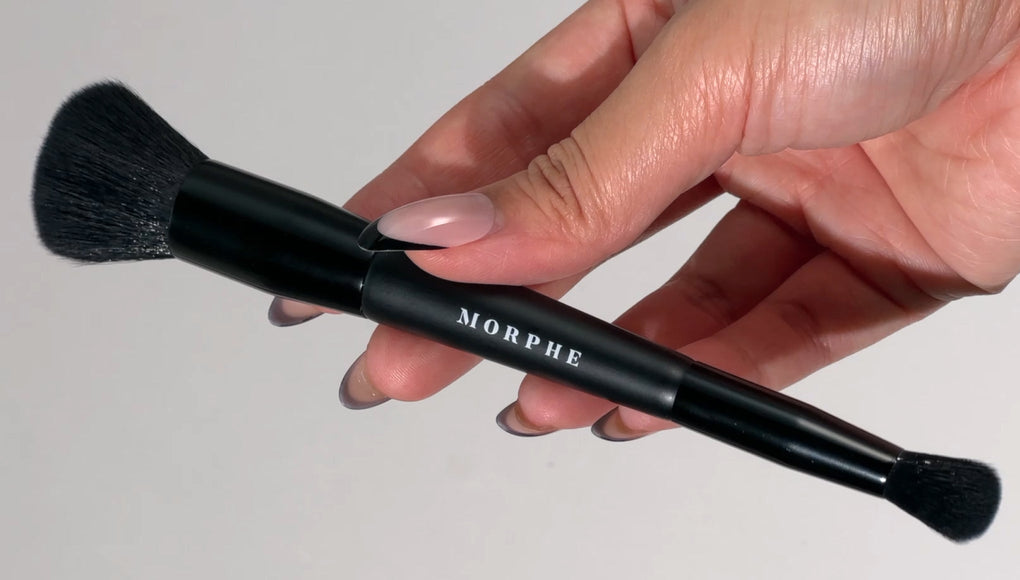
Credit: eu.morphe.com
Frequently Asked Questions
How Do I Sanitize My Makeup?
To sanitize makeup, spray powders with alcohol, wipe pencils with alcohol, and shave off lipstick tops. Clean brushes with soap and water. Disinfect tools with an alcohol solution.
How Do You Get Rid Of Bacteria On Makeup?
Sanitize makeup by wiping with a 70% isopropyl alcohol solution and allowing it to dry. Regularly clean tools with soap and water.
How To Sanitize A Makeup Palette?
To sanitize a makeup palette, gently wipe its surface with a cotton pad dipped in rubbing alcohol. Allow it to air dry before use.
How Do Makeup Artists Keep Things Sanitary?
Makeup artists maintain sanitation by regularly cleaning brushes and tools, disinfecting with alcohol-based solutions, and using disposable applicators when possible. They also avoid double-dipping and sterilize products by scraping surfaces and spritzing with alcohol.
Conclusion
Keeping your makeup clean ensures both beauty and health go hand in hand. This guide illuminated the path to a germ-free makeup routine. Remember, regular sanitization keeps skin irritations at bay. Adopt these simple steps and integrate them into your beauty regimen for lasting freshness.
Thank your skin by prioritizing hygiene and enjoy a radiant, healthy glow with each application.

